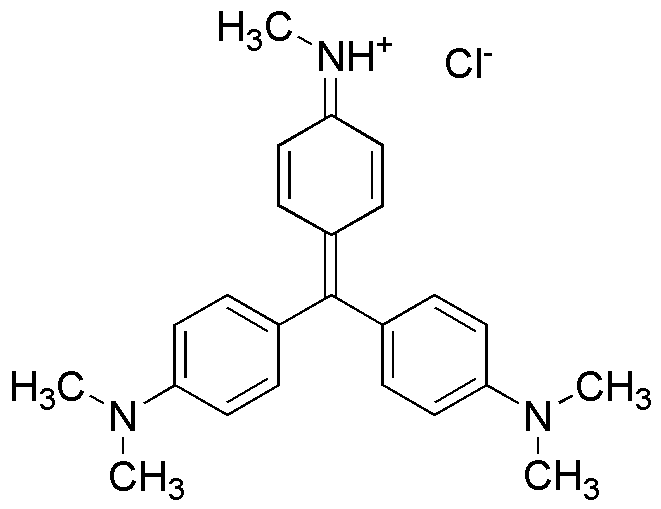Methyl Violet 2B certified is widely utilized in research focused on:
- Histological Staining: This dye is commonly used in laboratories to stain biological tissues, allowing researchers to visualize cellular structures under a microscope. Its ability to bind to nucleic acids makes it particularly useful in identifying cellular components.
- Textile Industry: Methyl Violet 2B is employed as a dye in the textile industry for coloring fabrics. Its vibrant hue and excellent lightfastness make it a preferred choice for producing long-lasting colors in various materials.
- Microbiology: In microbiological applications, this compound is used to differentiate between bacterial species based on their staining characteristics. It aids in identifying Gram-positive and Gram-negative bacteria, which is crucial for effective treatment decisions.
- Cosmetics: The chemical is also found in some cosmetic products, where it serves as a colorant. Its safety profile allows for its use in formulations like hair dyes and makeup, providing consumers with a range of color options.
- Research and Development: Methyl Violet 2B is utilized in various research applications, including the development of new dyes and pigments. Its unique properties can inspire innovations in materials science and other related fields.
General Information
Properties
Safety and Regulations
Applications
Methyl Violet 2B certified is widely utilized in research focused on:
- Histological Staining: This dye is commonly used in laboratories to stain biological tissues, allowing researchers to visualize cellular structures under a microscope. Its ability to bind to nucleic acids makes it particularly useful in identifying cellular components.
- Textile Industry: Methyl Violet 2B is employed as a dye in the textile industry for coloring fabrics. Its vibrant hue and excellent lightfastness make it a preferred choice for producing long-lasting colors in various materials.
- Microbiology: In microbiological applications, this compound is used to differentiate between bacterial species based on their staining characteristics. It aids in identifying Gram-positive and Gram-negative bacteria, which is crucial for effective treatment decisions.
- Cosmetics: The chemical is also found in some cosmetic products, where it serves as a colorant. Its safety profile allows for its use in formulations like hair dyes and makeup, providing consumers with a range of color options.
- Research and Development: Methyl Violet 2B is utilized in various research applications, including the development of new dyes and pigments. Its unique properties can inspire innovations in materials science and other related fields.
Documents
Safety Data Sheets (SDS)
The SDS provides comprehensive safety information on handling, storage, and disposal of the product.
Product Specification (PS)
The PS provides a comprehensive breakdown of the product’s properties, including chemical composition, physical state, purity, and storage requirements. It also details acceptable quality ranges and the product's intended applications.
Certificates of Analysis (COA)
Search for Certificates of Analysis (COA) by entering the products Lot Number. Lot and Batch Numbers can be found on a product’s label following the words ‘Lot’ or ‘Batch’.
*Catalog Number
*Lot Number
Certificates Of Origin (COO)
This COO confirms the country where the product was manufactured, and also details the materials and components used in it and whether it is derived from natural, synthetic, or other specific sources. This certificate may be required for customs, trade, and regulatory compliance.
*Catalog Number
*Lot Number
Safety Data Sheets (SDS)
The SDS provides comprehensive safety information on handling, storage, and disposal of the product.
DownloadProduct Specification (PS)
The PS provides a comprehensive breakdown of the product’s properties, including chemical composition, physical state, purity, and storage requirements. It also details acceptable quality ranges and the product's intended applications.
DownloadCertificates of Analysis (COA)
Search for Certificates of Analysis (COA) by entering the products Lot Number. Lot and Batch Numbers can be found on a product’s label following the words ‘Lot’ or ‘Batch’.
*Catalog Number
*Lot Number
Certificates Of Origin (COO)
This COO confirms the country where the product was manufactured, and also details the materials and components used in it and whether it is derived from natural, synthetic, or other specific sources. This certificate may be required for customs, trade, and regulatory compliance.


